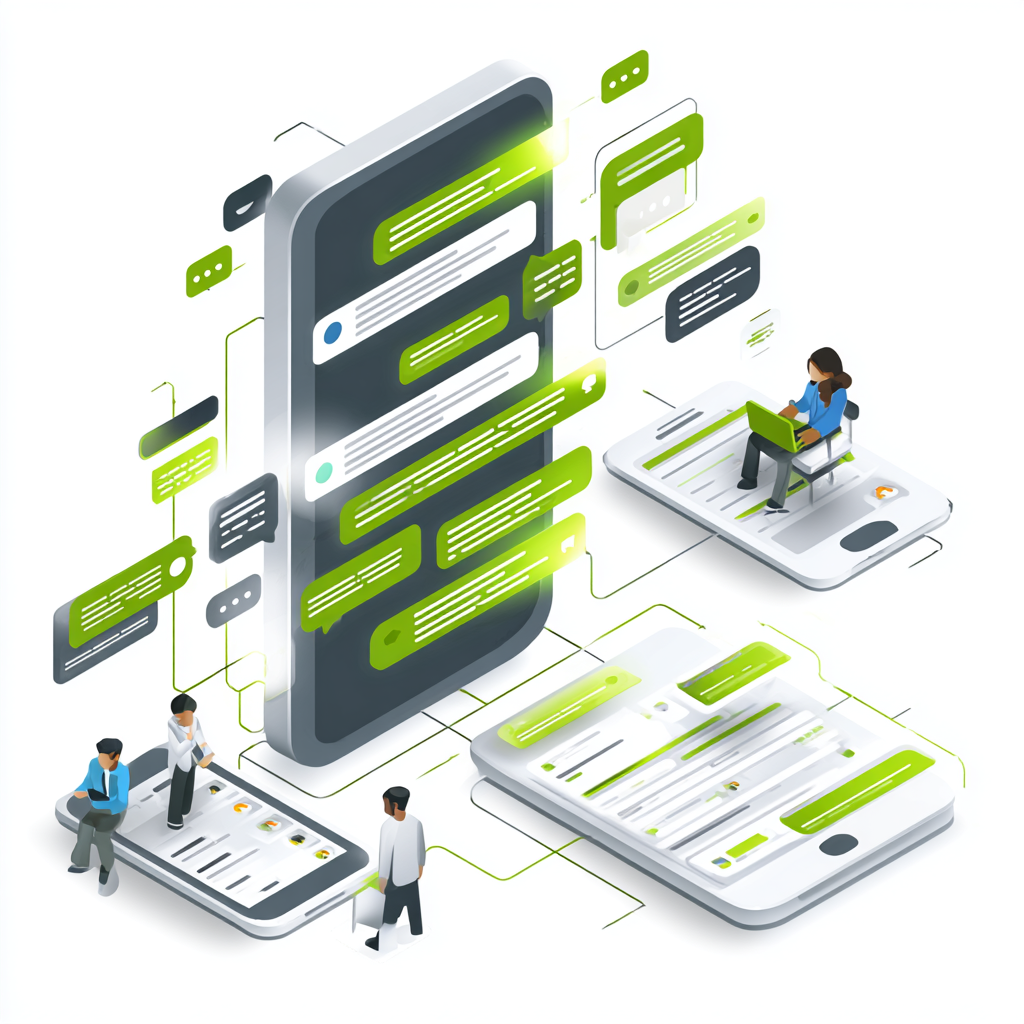Businesses today prioritize customer experience (CX) to stand out and retain customers. Enhancing CX not only fosters loyalty but also drives revenue growth. Organizations that focus on customer satisfaction are more likely to outperform their competitors. This article explores ten (10) effective strategies to optimize your customer experience and ensure long-lasting success for your business.
What is customer experience optimization?
Customer experience optimization (CX optimization) refers to enhancing every aspect of the customer’s journey with your business, from the first point of contact to post-purchase support. The goal is to create a seamless, efficient, personalized experience that meets and exceeds customer expectations. CX optimization involves continuously analyzing and improving processes, interactions, and touchpoints to ensure customers have a positive and engaging experience at every stage of their journey.
Why is customer experience optimization important?
Customer experience optimization is essential because it directly impacts customer satisfaction, loyalty, and overall business performance. In today’s competitive market, customers have high expectations and can easily switch to competitors if they feel their needs are not being met. A positive customer experience leads to the following key benefits:
- Customer retention: Customers with a positive experience are more likely to return and continue doing business with your company. Retaining customers is often more cost-effective than acquiring new ones.
- Increased revenue: Satisfied customers are more likely to make repeat purchases and spend more over time. They also tend to recommend your business to others, increasing sales.
- Brand advocacy: When customers have exceptional experiences, they become brand advocates. They share their positive experiences with friends and family, which can help attract new customers through word-of-mouth.
- Competitive advantage: Businesses that prioritize customer experience stand out in the market. A well-optimized customer experience can differentiate your brand, making it more memorable and attractive than competitors.
- Improved customer insights: Continuous customer experience optimization provides valuable insights into customer preferences, pain points, and behavior. These insights can guide product development, marketing strategies, and service improvements.
10 Customer experience optimization tactics
Here are ten (10) effective strategies to optimize your customer experience and ensure long-lasting success for your business:
1. Understand your customers deeply
Before you can optimize the customer experience, it is crucial to understand your customers’ needs and expectations thoroughly. This goes beyond knowing their names or where they live. It involves understanding their preferences, pain points, behaviors, and expectations. You can achieve this through various methods such as surveys, social media listening, customer reviews, and analyzing purchasing patterns. Gathering qualitative data through one-on-one interactions with customers and quantitative data through analytics tools can help you build a comprehensive profile of your customers.
2. Personalize every interaction
Personalization is one of the most effective ways to enhance the customer experience. Customers today expect personalized experiences that cater to their unique needs and preferences. You can use customer data to offer personalized product recommendations, send targeted marketing emails, or even address customers by name in support conversations. Personalization also extends to content, where relevant information can be delivered based on the customer’s past actions or interests.
3. Implement an omnichannel strategy
The customer journey is rarely linear. People now interact with businesses across multiple touchpoints, such as websites, mobile apps, social media platforms, email, phone calls, and in-store visits. Therefore, it is essential to implement an omnichannel strategy, ensuring that customers have a consistent experience across all channels. With an omnichannel approach, customers can seamlessly move from one channel to another without losing context. For example, a customer could start browsing a product on your website, ask a question via social media, and then complete the purchase in-store, without having to repeat themselves. This level of convenience is key to optimizing customer experience.
4. Leverage AI and automation
Artificial intelligence (AI) and automation are tools that help optimize the customer experience. They can help businesses respond quickly to customer inquiries, provide personalized recommendations, and offer predictive insights that enhance decision-making. For example, AI-powered chatbots can instantly answer customer queries, even outside regular business hours, improving the overall customer experience by reducing wait times. AI can also analyze data to predict customer needs and provide real-time recommendations, enabling businesses to offer proactive solutions that meet these needs. Automation helps streamline routine tasks, such as sending order updates or processing simple inquiries, allowing your customer support team to focus on more complex issues. These tools improve efficiency and contribute to a more responsive and personalized service.
5. Collect and act on customer feedback
Customer feedback is a goldmine for improving your CX. Regularly solicit customer feedback through surveys, reviews, and direct interactions. This can include post-purchase surveys, customer satisfaction (CSAT) scores, and Net Promoter Scores (NPS). However, collecting feedback is only part of the equation. The most critical aspect is taking action. When customers take the time to offer suggestions or voice complaints, they expect their feedback to be acknowledged and addressed. Implementing changes based on this feedback can improve customer satisfaction. Additionally, closing the feedback loop by informing customers about the changes made in response to their feedback helps build trust and shows that you genuinely care about their experience.
6. Empower and train employees
Your employees are the frontline of customer experience. They play a significant role in how customers perceive your brand. Empowering your employees through training, providing them with the right tools, and fostering a positive work culture is crucial to ensuring they can deliver excellent customer service. Invest in regular training sessions to keep your staff up-to-date on product knowledge, soft skills, and best practices for customer interactions. Employees who feel confident and well-equipped to solve problems can deliver exceptional service that meets customer expectations. Employee engagement has a direct impact on customer satisfaction. Employees who feel valued and motivated are more likely to go the extra mile for customers, creating memorable and positive experiences.
7. Simplify customer journeys
Customer journeys can become complicated when businesses overcomplicate processes or make it difficult for customers to complete tasks. Simplifying the process, whether purchasing a product, booking a service, or reaching customer support, is essential for providing a positive experience. Start by identifying pain points in the customer journey, such as unnecessary steps, confusing instructions, or slow response times, and eliminate them to improve the overall experience. Simplify website navigation, streamline checkout processes, and provide clear, concise instructions at every step of the journey. Customers who can easily navigate their journey without frustration are more likely to make repeat purchases and become loyal advocates for your brand.
8. Utilize customer journey mapping
Customer journey mapping is valuable for visualizing how customers interact with your business at each touchpoint. By creating detailed maps of the customer journey, businesses can pinpoint opportunities to optimize the experience. Mapping out the journey lets you understand customers’ emotional responses, expectations, and behaviors at each stage. It also highlights pain points and areas where customers may experience friction. Once you have identified these issues, you can take targeted actions to enhance the overall experience, such as offering more support at specific stages, refining messaging, or streamlining processes. By continuously refining the customer journey, businesses can ensure that they are consistently delivering a positive experience.
9. Monitor key performance indicators
To truly optimize customer experience, it is essential to measure its success. Regularly tracking and monitoring key performance indicators (KPIs), such as CSAT, NPS, and CES (Customer Effort Score), will provide valuable insights into how well you are meeting customer expectations. These metrics help you assess whether your strategies are working and highlight areas where improvement is needed. For example, if your NPS score is low, it could indicate that your customers are not satisfied with your products or services and that changes are necessary. Monitoring KPIs regularly allows businesses to adjust their CX strategies in real-time, leading to better decision-making and continuous improvement.
10. Foster a customer-centric culture
A customer-centric culture is the foundation of any successful customer experience strategy. When all employees, regardless of their role, are focused on delivering great experiences, consistency across all touchpoints becomes easier. Start by ensuring that customer needs are prioritized at every level of decision-making, from leadership to front-line employees. Encourage collaboration between departments, such as marketing, sales, and customer support, to deliver a unified experience that’s consistent and aligned with your brand’s values. A customer-centric culture fosters an environment where every employee understands their role in improving the customer experience, leading to long-term customer loyalty and business success.
The importance of prioritizing customer experience optimization
In a world where customers have more choices than ever, optimizing the customer experience has become a critical business strategy. Not only does it enhance customer satisfaction and loyalty, but it also drives growth and profitability. Businesses can build stronger relationships, foster brand loyalty, and differentiate themselves from competitors by focusing on every touchpoint and ensuring that customers have a smooth, personalized, and positive experience. Ultimately, customer experience optimization should be an ongoing effort. As customer expectations evolve and new technologies emerge, businesses must remain flexible and adapt to these changes to stay ahead of the curve. Investing in customer experience optimization is not just a short-term gain but a long-term strategy for building a thriving, customer-focused business.





